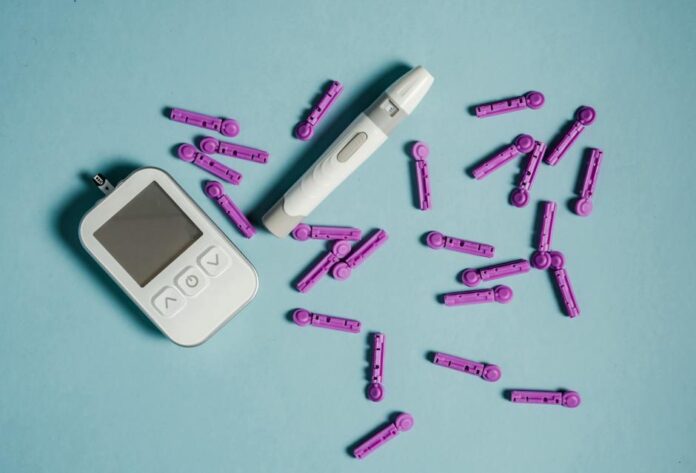
Diabetic attacks, also known as diabetic emergencies, are serious health complications that can occur in individuals with diabetes when their blood sugar levels become dangerously high (hyperglycemia) or dangerously low (hypoglycemia). Understanding the causes, symptoms, and treatment options for diabetic attacks is crucial for managing this condition effectively and preventing potentially life-threatening consequences.
Causes of Diabetic Attacks
There are several factors that can contribute to diabetic attacks in individuals with diabetes. The most common causes of diabetic emergencies include:
1. Poor Blood Sugar Control: One of the primary reasons for diabetic attacks is poor blood sugar control. This can occur when individuals with diabetes fail to monitor their blood sugar levels regularly, follow a healthy diet, or take their prescribed medications as directed. Fluctuations in blood sugar levels can lead to diabetic emergencies, such as hyperglycemia or hypoglycemia.
2. Insulin Deficiency: In individuals with type 1 diabetes, the body does not produce enough insulin to regulate blood sugar levels effectively. Insulin is a hormone that helps transport glucose from the bloodstream into cells to be used as energy. Without enough insulin, glucose accumulates in the bloodstream, leading to hyperglycemia and diabetic ketoacidosis (DKA) – a life-threatening condition.
3. Insulin Resistance: In individuals with type 2 diabetes, the body becomes resistant to the effects of insulin, leading to elevated blood sugar levels. Over time, this can result in hyperglycemia, which can progress to diabetic ketoacidosis if left untreated.
4. Inadequate Carbohydrate Intake: Carbohydrates are the body’s primary source of energy, and individuals with diabetes need to consume an adequate amount of carbohydrates to maintain normal blood sugar levels. Skipping meals or not eating enough carbohydrates can lead to hypoglycemia or low blood sugar levels.
Symptoms of Diabetic Attacks
The symptoms of diabetic emergencies can vary depending on whether blood sugar levels are too high or too low. Some common symptoms of hyperglycemia (high blood sugar) include:
– Excessive thirst
– Frequent urination
– Fatigue
– Blurred vision
– Dry mouth
– Rapid heartbeat
– Nausea and vomiting
– Fruity breath odor
On the other hand, symptoms of hypoglycemia (low blood sugar) may include:
– Shakiness
– Sweating
– Dizziness
– Anxiety or irritability
– Hunger
– Confusion or difficulty concentrating
– Weakness or fatigue
– Rapid heartbeat
It is important to note that diabetic emergencies can progress rapidly and lead to serious complications if not treated promptly. If you or someone you know is experiencing symptoms of a diabetic attack, it is crucial to seek medical attention immediately.
Treatment for Diabetic Attacks
The treatment for diabetic emergencies will depend on whether blood sugar levels are too high or too low. In cases of hyperglycemia, treatment may involve:
– Administering insulin to lower blood sugar levels
– Rehydrating with fluids to prevent dehydration
– Monitoring blood sugar levels closely
– Addressing any underlying factors contributing to high blood sugar levels
In cases of hypoglycemia, treatment may involve:
– Consuming fast-acting carbohydrates, such as glucose tablets, fruit juice, or candy
– Monitoring blood sugar levels to prevent recurrence
– Eating a balanced meal or snack to stabilize blood sugar levels
– Adjusting medication dosages as needed
In severe cases of hyperglycemia, diabetic ketoacidosis (DKA) may occur, which requires immediate medical attention. DKA is a life-threatening condition that can result in coma or death if left untreated. Treatment for DKA typically involves hospitalization, intravenous fluids, insulin therapy, and close monitoring of blood sugar and electrolyte levels.
Preventing Diabetic Attacks
While diabetic emergencies can be challenging to manage, there are several strategies individuals with diabetes can adopt to prevent them from occurring. Some tips for preventing diabetic attacks include:
– Monitoring blood sugar levels regularly
– Following a healthy diet rich in fruits, vegetables, whole grains, and lean proteins
– Taking prescribed medications as directed by a healthcare provider
– Engaging in regular physical activity to help maintain blood sugar levels
– Avoiding excess alcohol consumption, which can affect blood sugar levels
– Educating family members, friends, and coworkers about how to recognize and respond to diabetic emergencies
It is important for individuals with diabetes to work closely with their healthcare providers to develop a personalized treatment plan that addresses their specific needs and goals. By staying proactive about managing their condition and seeking medical attention when needed, individuals with diabetes can reduce their risk of diabetic attacks and maintain optimal health and well-being.
In conclusion, diabetic attacks are serious health complications that can occur in individuals with diabetes when their blood sugar levels become too high or too low. Understanding the causes, symptoms, and treatment options for diabetic emergencies is crucial for managing this condition effectively and preventing potentially life-threatening consequences. By following a healthy lifestyle, monitoring blood sugar levels regularly, and working closely with healthcare providers, individuals with diabetes can minimize their risk of diabetic attacks and lead a fulfilling, active life.












